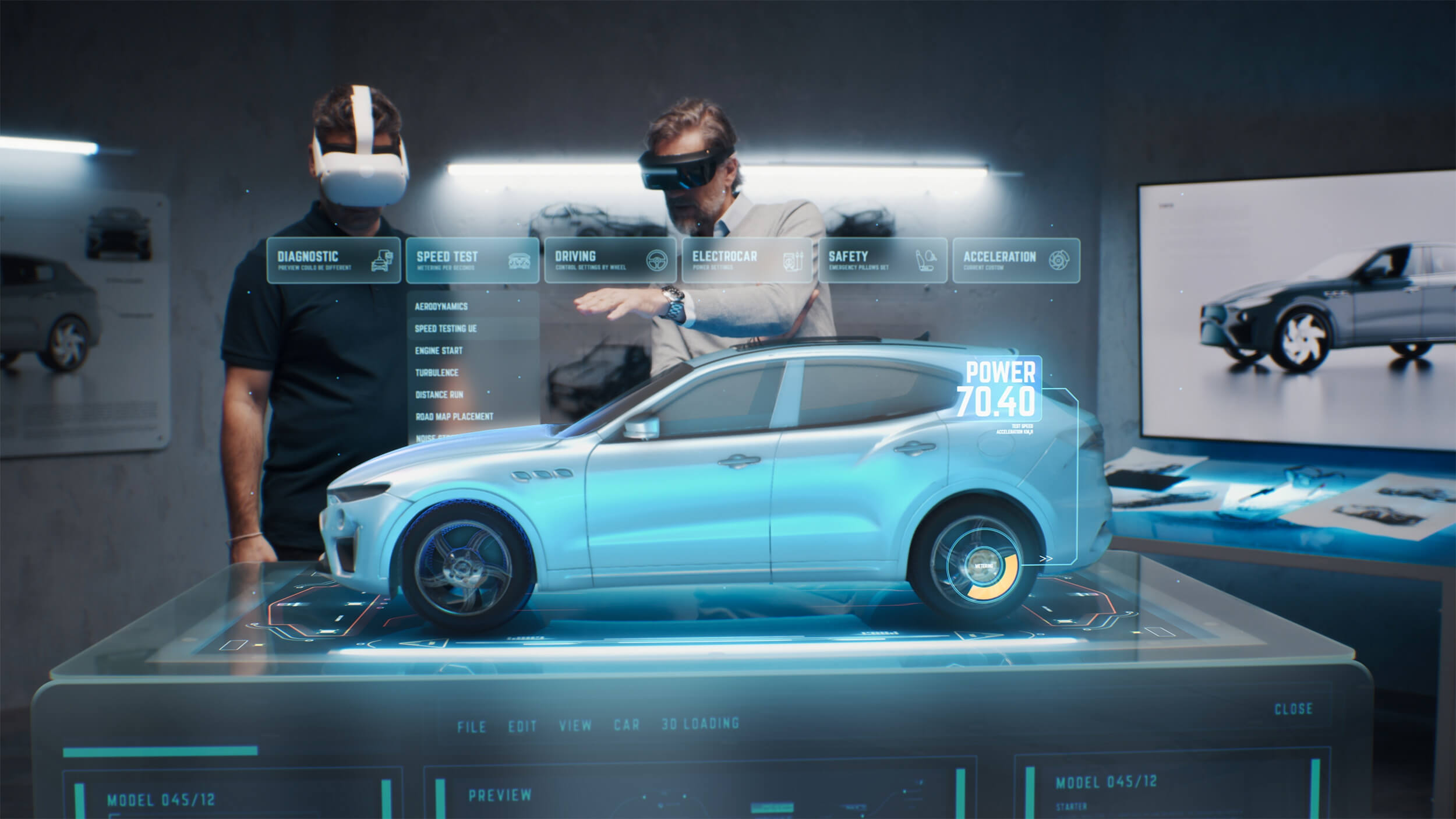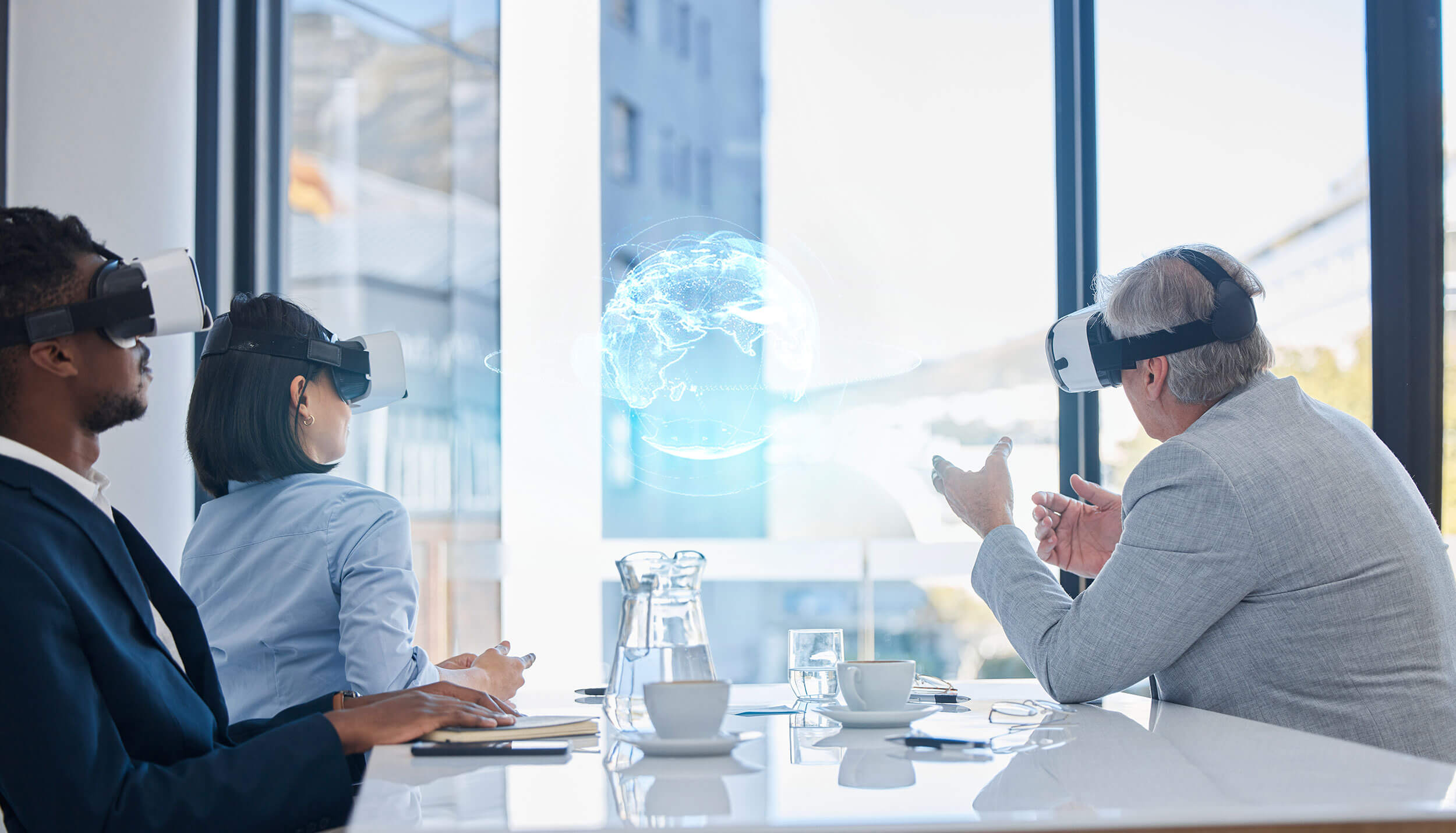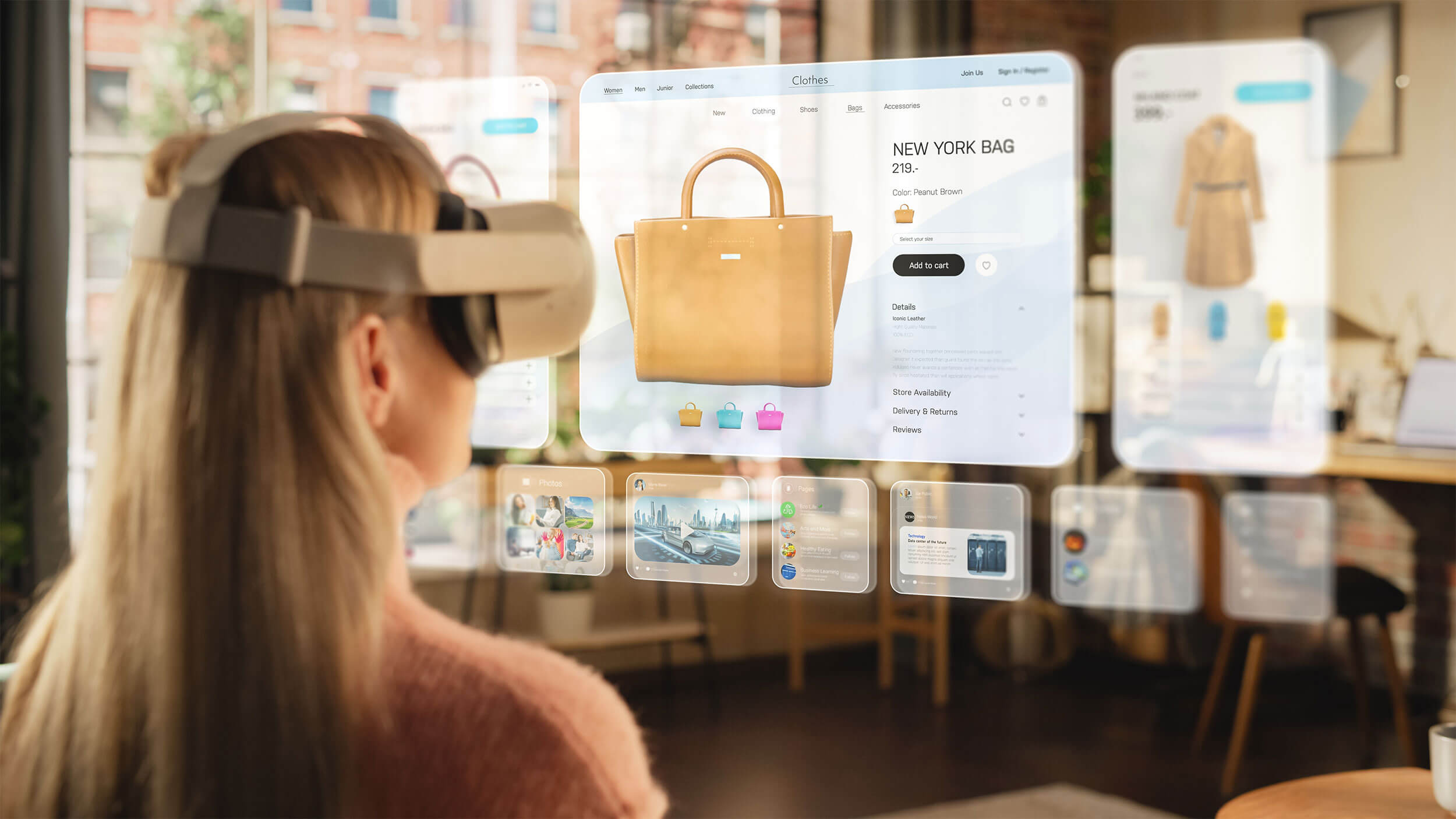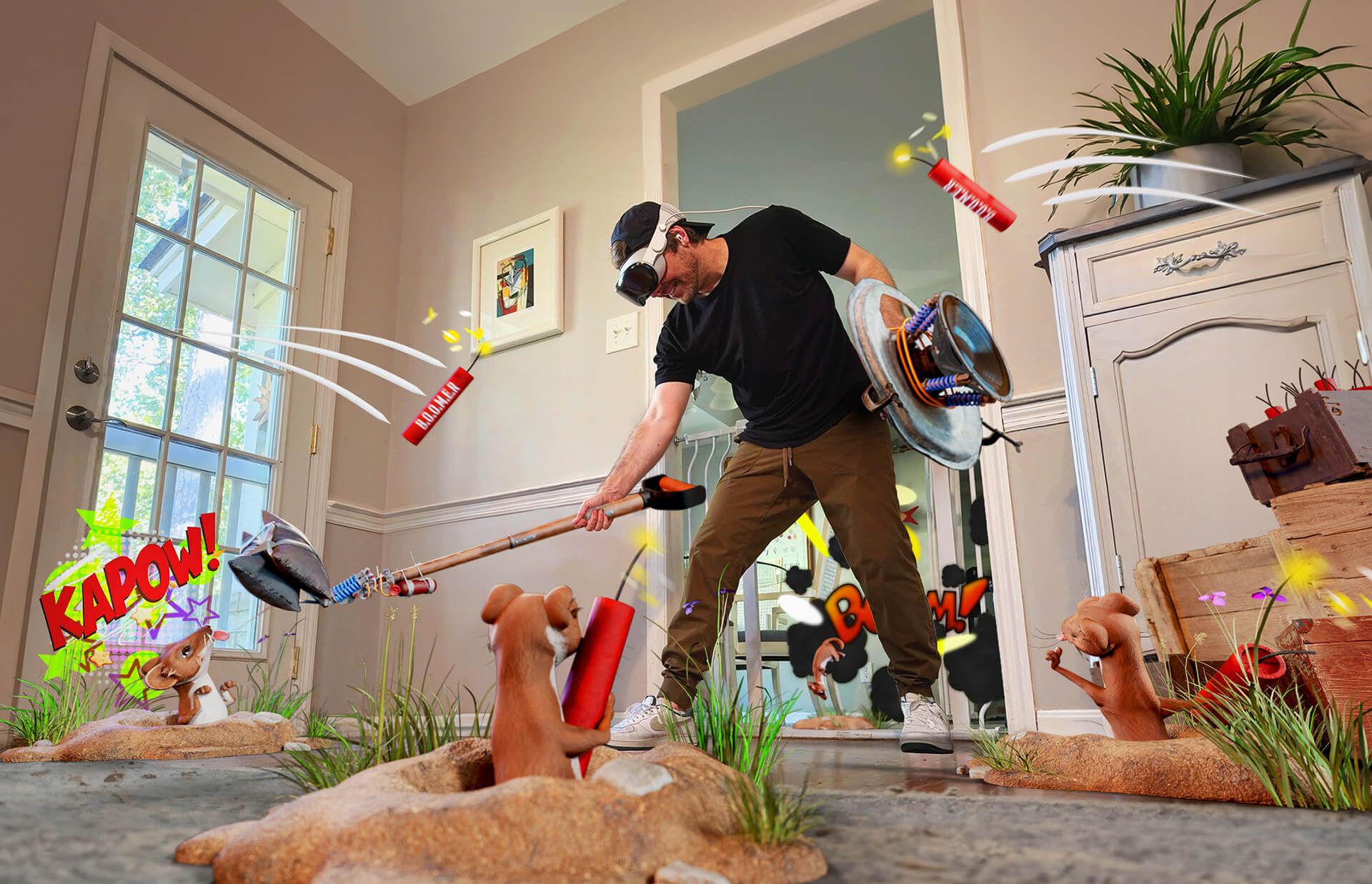When it comes to engaging modern buyers, static assets shots are no longer enough to catch attention or compel. Whether you’re selling a car, software platform, industrial machine, or skincare product, consumers and B2B stakeholders alike want to experience value—not just read about it.
Virtual Reality (VR) answers that call by putting the user inside your product narrative. It transforms product education into immersive, memorable interactions that accelerate decision-making, reduce returns, and differentiate your brand in a crowded marketplace.

Key Takeaways
- VR product demos simplify complexity, offering intuitive, hands-on learning without a physical prototype.
- Immersive storytelling drives higher retention and emotional buy-in.
- Customizable, interactive configurations help buyers visualize solutions that fit their needs.
- Cross-platform support (Apple Vision Pro, Quest 3, AndroidXR) ensures accessibility for in-store, at-home, or trade show deployment.
- Measurable ROI through reduced returns, faster sales cycles, and deeper brand recall.
Why Use Virtual Reality for Product Engagement?
The challenge with most product presentations is abstraction. Your audience is expected to imagine how the product works, looks, or feels—often relying on static 2D visuals or spec sheets. But when they can explore your product spatially, with full agency, they remember it.
According to Capgemini, VR-based virtual site visits can save up to 45% of traditional visit costs, and a PwC study found that VR accelerates decision-making by 40% in B2B sales cycles. VR doesn’t just make your product more engaging; it makes the product feel real before the deal is closed.

Who Benefits from VR Product Demos?
B2B Sales Teams
B2B sales teams benefit significantly from VR’s ability to demonstrate complex, technical offerings such as machinery, enterprise software, or multi-system integrations. Instead of static presentations or white papers, Virtual Reality provides immersive walkthroughs that let prospects experience how your solution operates in realistic scenarios, leading to quicker understanding and greater buy-in.
Consumer Brands
For consumer-facing companies, virtual reality offers a unique way to turn abstract product claims into visual, interactive proofs. Skincare brands can show users simulated results in real time. Furniture or fashion retailers can deploy in-store or at-home trials that help shoppers better visualize style, fit, or function, reducing guesswork and increasing confidence.
Lowe’s, for example, created a unique Apple Vision Pro experience that lets customers visualize their dream kitchens, allowing them to choose cabinets, countertops, flooring, and other features to design the perfect space.
Retail Innovation Teams
Retail innovation leaders are using VR to transform passive shelf browsing into active exploration. Shoppers can interact with virtual displays, rotate or modify products, and view contextual scenarios that influence purchase decisions. By matching consumer expectations with virtual previews, brands can reduce return rates and boost in-store engagement.

Manufacturers
Manufacturers can train staff more efficiently and cost-effectively using Virtual Reality simulations, eliminating the need for physical equipment or setups. Additionally, during procurement or sales discussions, they can showcase a range of configurations and options interactively, helping clients better understand the scope and flexibility of the offering. RPR’s Lenovo VRX Enterprise Training Simulation enabled customers to explore headset features, use cases, and setup procedures interactively—supporting both sales enablement and customer onboarding.
Keep up to date
Sign up to our newsletter for exclusive updates and content, delivered directly to your inbox.
Use Cases that Work
Virtual Product Configurators
Virtual product configurators let buyers assemble or customize offerings in 3D—whether that’s adjusting components in a high-performance laptop or visualizing color and trim options for a vehicle. Users can drag and drop modules, compare features side by side, and receive real-time feedback, making the selection process more interactive and informed.
Technical Demos & Immersive Tours
For industries like real estate, aerospace, automotive, or infrastructure, immersive technical demos provide walkthroughs that convey scale, mechanics, and layout in a way static documents can’t. These demos help communicate how a system or facility operates. RPR’s Warp Experience on Apple Vision Pro, which visualized AI shipping routes in 3D, showcased the power of spatial storytelling for data-rich, complex topics.
Try-Before-You-Buy Experiences
Consumer brands use VR to eliminate uncertainty in the buying process. For example, a virtual mirror allows shoppers to preview makeup shades; a VZFits cycling simulation game lets users test fitness equipment; and skincare visualizers can show projected results over time. These interactions create confidence and engagement that static packaging or product descriptions can’t achieve.
Distribution
With VR, it’s the omni-channel distribution that allows brands to make product demos available 24/7. The power of using Virtual Reality at events and trade shows is immense, but there’s modern deployments that span much further, onto:
In-Store Retail
- Standalone VR kiosks
- Shelf-integrated QR codes that launch AR/VR demos
Sales Enablement
- VR headsets preloaded with demos for high-ticket B2B pitches
- Cloud-based VR walkthroughs for international buyers
At-Home Exploration
- App-based VR or MR content available via Quest 3 or Apple Vision Pro
- WebXR interfaces for lighter touch engagement on desktop/mobile
Let’s chat
Not sure where to start? Book a free strategy call with us to get started! No strings attached.

Platform Considerations
Smart development avoids lock-in and builds for all to reach all. RPR prioritizes compatibility across all platforms such as:
- Apple Vision Pro for premium, enterprise-grade showcases
- AndroidXR for open-ecosystem flexibility
- Meta Quest 3 for cost-effective, wireless deployment
- WebXR for lightweight, browser-based demos
Cross-platform builds also future-proof your investment as device ecosystems evolve.
Defenderella is our latest cross-platform MR game compatible with modern headsets. It uses hand tracking and gaze controls so no controllers are needed, just hands for a smooth and fun multiplayer tabletop experience.
Measuring ROI on Immersive Product Content
What makes Virtual Reality particularly valuable is that its impact can be tracked and you can be the eyes for your users while they’re in the experience and get data on where the gaze has stayed the longest to develop a color spectrum like a heatmap. Some of these tracked aspects include the ability to reveal insights on duration, interactions and return rates:
- Engagement duration: How long did the user stay immersed?
- Interaction data: Which features did they explore?
- Conversion uplift: Did they request a quote or add to cart after the experience?
- Return rate: Has it decreased in regions using VR pre-purchase?
The Future of Personalized Demos with AI and VR
Let your product speak for itself. Imagine you walk into a store and an AI avatar greets you, scans your interests and quickly launches a VR demo tailored to you and your preferences. This isn’t sci-fi. RPR’s AI avatars are already in-market, powering virtual agents and custom storytelling for events and enterprise clients.
One great example is the AI brand ambassadors we created for McCain as part of the WebAR farming game, including Wormy, an AI-powered expert on regenerative agriculture, and Vera, a friendly farm guide who was also featured as an AI ambassador at an immersive installation at Chelsea Market in NYC.
If your product can be seen, touched, or explained—it can be experienced in VR. And when it is, users not only understand it better, they remember it longer and act on it faster. In a world where attention is a scarce resource, immersive content is more a competitive advantage than luxury.
FAQs on Boosting Product Engagement with Virtual Reality
How can brands use interactive and immersive content?
There’s countless examples of how brands can leverage interactive and immersive content like VR games, experiences and demos with polls, quizzes, additional AR filters, and interactive videos to boost well-rounded customer engagement.
What is VR and why is it useful for product demos?
Virtual Reality technology creates simulated environments that users can interact with using headsets, controllers, and sensors. VR allows users to intuitively explore product’s features and functions, while creating a sense of presence and connection and encouraging word-of-mouth.
What industries can Virtual Reality be used in?
Any and every. To name a few, the most popular use ones are Healthcare, Education, Real Estate and Architecture, Automotive, Retail and Digital Marketing, Tourism and Hospitality, Engineering & Manufacturing, Mental Health & Therapy.
References
- https://www.businessoffashion.com/articles/technology/consumer-expectations-augmented-reality-gaming-fashion-in-store-experiential-retail-online-ecommerce/
- https://rockpaperreality.com/our-work/warp/
- https://rockpaperreality.com/our-work/virtual-reality-proof-of-concept-for-lenovo-vrx/
- https://rockpaperreality.com/insights/virtual-reality/virtual-reality-for-events-how-to-stand-out-and-captivate-your-audience/
- https://rockpaperreality.com/insights/extended-reality/where-to-start-with-the-apple-vision-pro-and-how-it-may-benefit-your-brand/
- https://www.instavr.co/articles/general/vr-analytics-how-to-use-a-virtual-reality-heat-map
- https://corporate.lowes.com/newsroom/press-releases/lowes-style-studiotm-apple-vision-pro-expands-lowes-stores-austin-texas-03-10-25
- https://www.fairworlds.com/blog/how-immersive-reality-ar-vr-shortens-the-b2b-sales-cycle
- https://rockpaperreality.com/our-work/chronic-cellars-ai-sommelier/
- https://rockpaperreality.com/our-work/mccain-farms-of-the-future/
